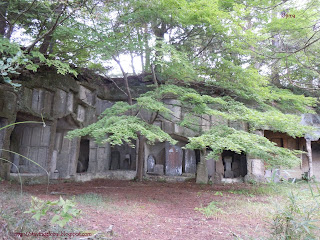In September this year, we visited Matsushima.
Matsushima is one of the three great scenic views of Japan called “Nihon Sankei”. It is said that the Haiku poet Basho was so mesmerized by the beauty of Matsushima, that he could not think of words to compose a haiku to describe it. It is said that the only words he could say were “ Matsushima, Ah Matsushima, Ah Matsushima, ah , Matsushima Ah! ”
Matsushima is a group of 260 islands in the Pacific Ocean. The name Matsushima means “Pine covered islands”. Most of these islands are actually tiny islets with no inhabitants. Due to the sea water and corrosion, these islands have strange shapes and few have acquired the shape of different creatures.
Best way to view these islands is a Cruise ride. The Marubun Cruise company is the most popular of the cruise companies that operate in the Matsushima Bay. We took the Cruise A which is a 50 minute round trip from Matsushima bay. For more information on the cruise visit : http://www.marubun-kisen.com/english/matsushima/index.html
The other attractions of Matsushima are
Godaido Hall : It is a small islet off the coast connected to the mainland by a small bridge .
A small temple pavilion is located on the island. The interior of the temple is open to public once in 33 years , the last being in 2006.
Admission: Free
Opening hours: 8:30 – 17:00
No closing days
Oshima Island: This island also called Ojima was used as a meditation and training place by Zen monks.
There are lot of statues and rock carvings on this island along the walking trails.
This island can be reached on foot by a small red lacquered bridge called Togetsukyo Bridge.
Admission: Free
Zuiganji temple: This zen temple was originally built in the Heian period and the main hall contains precious paintings and carvings. This temple has been designated a national treasure. The entrance fee is 700 yen. The path from the entrance to the temple is lined on both sides by cedar trees.
There is also a path along moss covered Buddhist statues and caverns.
Kanrantei Pavilion: This is a tea house with a great view of the Matsushima bay. It is said that this was originally built in Kyoto by Shogun Toyotomi Hideyoshi who gifted it to Date Tadamune who moved it to Matsushima.
Fukuurajima: This island is connected to the mainland by a 250 meter long vermillion coloured foot bridge.
A toll of 200 yen is payable for using the bridge. There are many walking trails on the island. Not very spectacular considering it is covered with lots of wild plants and weeds. It is more of a botanical garden than a tourist spot.
Masamune Date, the feudal lord is said to have had a special liking for Matsushima. Many structures in the Zuiganji temple complex and the Godaido hall was constructed on his orders.
Matsushima is located in Miyagi prefecture . Matsushima is one of the most visited destinations in Tohoku. The proximity to Sendai makes Matsushima easily accessible. Hotel reservations are necessary. Weekends can be crowded and traffic within the town could be slow. Paid parking is available next to the Ojima island and near the Matsushima Bay and most places are only a short walk away. The train station is also a short walk from the Matsushima Bay. Easiest and most convenient way to travel around in Matsushima is on foot.
The entire town can be covered in one day or approximately 5-6 hours.
When in Matsushima, do try the fresh seafood. Lots of food stalls and joints sell oyster, squid and clam delicacies.


















































